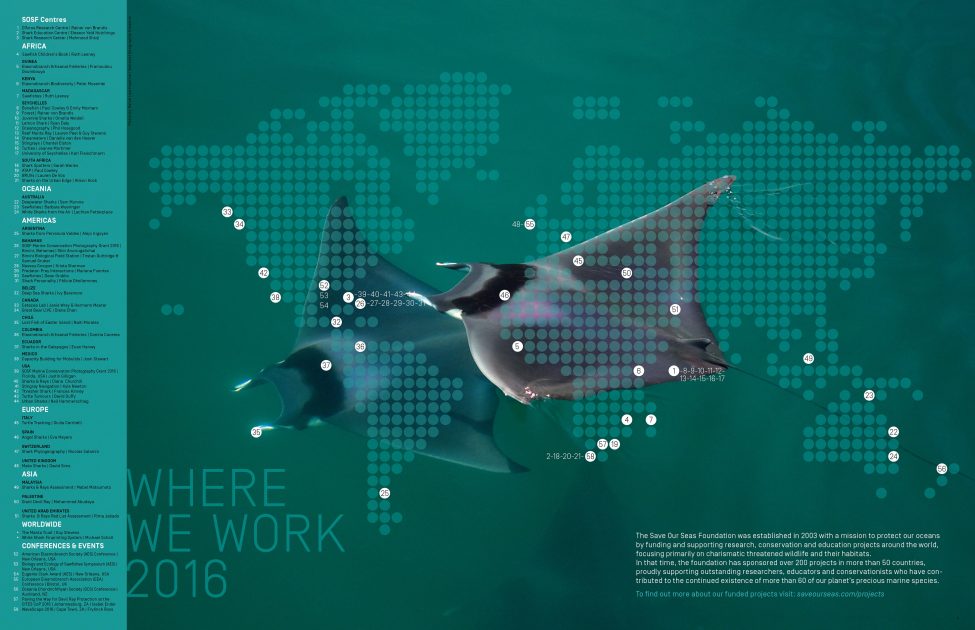Editorial #06
Winter | December 2016 issue
Photo by Duncan Brake
As I write these words, I rejoice in the fact that trade in 29 elasmobranch species is now regulated under the Convention on International Trade in Endangered Species (CITES). The listing of the silky shark and the three thresher shark and nine devil ray species on Appendix II in October – and by a huge majority vote – is sending a clear message: countries want the fisheries supplying the demand for these species to be sustainably managed. They also expect the man-agers of those fisheries and of the trade world-wide to work together to achieve that end. I view the listings as a positive success for collaboration in conservation, too. A number of NGOs, including one of our partners, the Manta Trust, have worked very hard to inform and convince a majority of signatory countries to take this unprecedented step.
This success is a lesson in humility for people work-ing in conservation, especially in a world of ever-accelerating connectivity and communication, where news and information have become instantaneous and accessibility is constant. Strong conservation requires patience. I look back at my remote involvement in getting the third elasmobranch species, the charismatic great white shark, listed back in 2004 as a result of workshops and my research. In just over a decade we have gone from only two elasmobranchs to nearly 30 listed under what is probably one of the best forms of protection that can be afforded to marine species with global distribution.
Yet the fact that this list is growing longer is worrying. Although important news has come through of some population recoveries, we need to keep in mind that the oceans are still mostly unregulated and represent incredibly complex ecosystems. A lot more needs to be put in place to ensure that not only are the visible and accessible species protected, but also the less charismatic ones and those that hide in deep waters and are therefore poorly known.
In this issue we investigate how two fragile ecosystems on opposite sides of the Gulf Stream have been encroached upon by human developments and what the impacts have been. In Miami, South Florida, the ever-increasing human need for habitable space is taking over what used to be a wild and unfriendly environment. And in Bimini, The Bahamas, the development of a leisure resort is continuing unchecked. These two articles have been illustrated by the two winners of our Marine Conservation Photography Grant, Justin Gilligan from Australia and Sirachai Arunrugstichai from Thailand, respectively. Their assignments demonstrate the importance and commitment of the Save Our Seas Foundation to conservation and education.

